The James Simon Gallery building, designed by Pritzker Prize 2023 winner David Chipperfield, was completed in December 2018. The design of the building is inspired by Friedrich August Stüler’s colonnades at the Alte Nationalgalerie and consists of a stone basement with a modern continuation of the colonnades. The initial designs for the James Simon Gallery featured plain cubes made of satin glass and steel, which led to various protests. In 2004, an official panel recommended to Parliament that the government abandon plans for the entrance building due to the controversial design. However, in 2007, there was an extensive revision of the design, which resulted in the construction of the current reception building.
The James Simon Gallery is an important addition to the Museum Island in Berlin, which is a UNESCO World Heritage site. The gallery serves as the central entrance to the museum complex, providing visitors with access to five of the most important museums in Germany, including the Pergamon Museum and the Alte Nationalgalerie. The building’s design reflects the historical context of the museum complex while also showcasing modern architecture.
James Simon Galerie Technical Information
- Architects1-15: David Chipperfield Architects
- Location: Berlin, Germany
- Client: Stiftung Preußischer Kulturbesitz rep. by Bundesamt für Bauwesen u. Raumordnung
- Internal area: 10,900.00 m²
- Topics: Museums, Classic Architecture
- Project Year: 2018
- Photographs: © Simon Menges, © Ute Zscharnt
The architectural language of the James-Simon-Galerie adopts existing elements of the Museum Island, primarily from the external architecture, such as built topography, colonnades and outdoor staircases, making reference to Schinkel, Stüler and the other architects involved in the creation of Museum Island.
– David Chipperfield Architects
James Simon Galerie Photographs
The James-Simon-Galerie: A Gateway to Museum Island
As a continuation of Friedrich August Stüler’s forum architecture, the James-Simon-Galerie serves as the new entrance building for Museum Island, completing the ensemble between the Kupfergraben canal and Neues Museum. Together with the ‘Archaeological Promenade,’ it forms the backbone of the master plan that was developed in 1999 and adopted as the basis for all further planning on Museum Island. The building is situated on a narrow strip of land where Karl Friedrich Schinkel’s ‘Neuer Packhof’ administration building stood until 1938.
As the new gateway to the Museum Island, the James-Simon-Galerie plays a significant role and is suitable for welcoming large numbers of visitors, housing all the facilities required by the contemporary museum-goer. The James-Simon-Galerie addresses itself to the Lustgarten, the Schlossbrücke (Palace Bridge), and the Kupfergraben canal. It forms a physical connection above ground with the Pergamon Museum and links the museum via the Archaeological Promenade at the basement level with the Neues Museum, the Altes Museum, and the Bode Museum.
A staggering of the building dimensions ensures that the view from the Schlossbrücke into the depths of the Museum Island and of the west façade of the Neues Museum is preserved. The high stone plinth of the building reinforces the bank of the Kupfergraben canal, above which a tall colonnade rises up, expressing a classical piano nobile. Large parts of this principal level will be accessible to the public outside opening hours, further extending the public realm of Museum Island. Slender columns become a leitmotif, reminiscent of the famous sketch by Friedrich Wilhelm IV for his’ cultural acropolis’.
They continue Stüler’s colonnade that originally ended at the Neues Museum in a contemporary form, creating a new small colonnaded courtyard between the Neues Museum and the James-Simon-Galerie. Three flights of wide steps, set between the elongated plinth and the lower colonnade, invite visitors into the building. Arriving at the upper level, visitors enter a generous foyer with info and ticket counters and direct-level access to the main exhibition floor of the Pergamon Museum. The foyer also encloses the cafeteria and opens out onto a grand terrace that, along Kupfergraben canal, runs the full length of the building. A mezzanine floor beneath the main entrance foyer accommodates the museum shop, a large cloakroom, toilet facilities, and lockers, while the temporary exhibition spaces and an auditorium are situated at the basement level.
The architectural language of the James-Simon-Galerie adopts existing elements of the Museum Island, primarily from the external architecture, such as built topography, colonnades, and outdoor staircases, making reference to Schinkel, Stüler, and the other architects involved in the creation of Museum Island. The materiality of the building in reconstituted stone with natural stone aggregate blends in with the rich material palette of Museum Island with its limestone, sandstone, and rendered façades, while smooth in-situ concrete dominates the interior spaces.
The entrance building is named after one of the city’s most important patrons, James Simon, who bequeathed his art collections and excavation findings to the Berlin State Museums at the beginning of the twentieth century.
James Simon Galerie Plans
James Simon Galerie Image Gallery
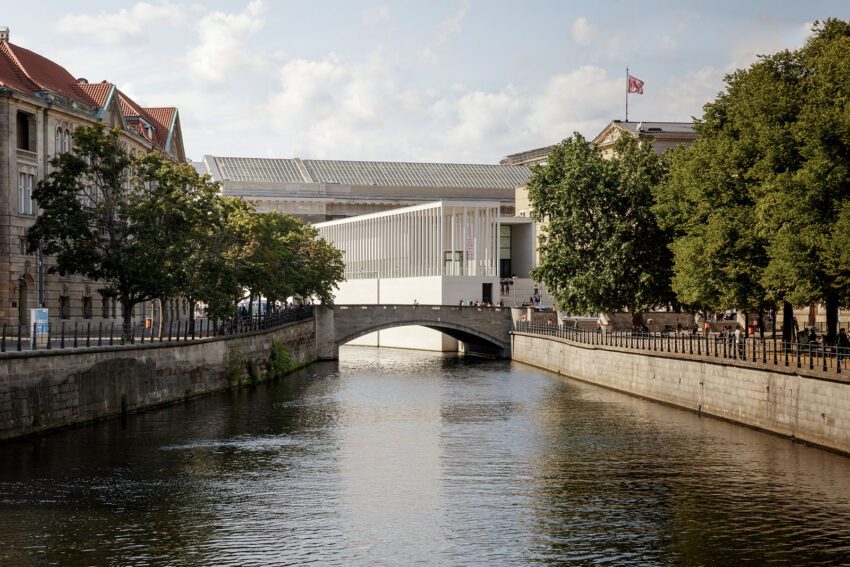



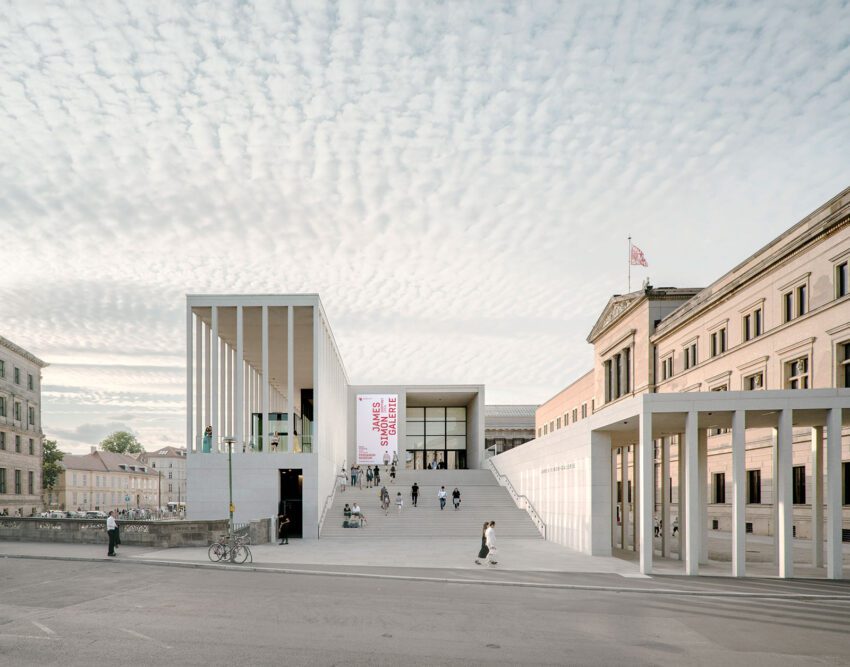

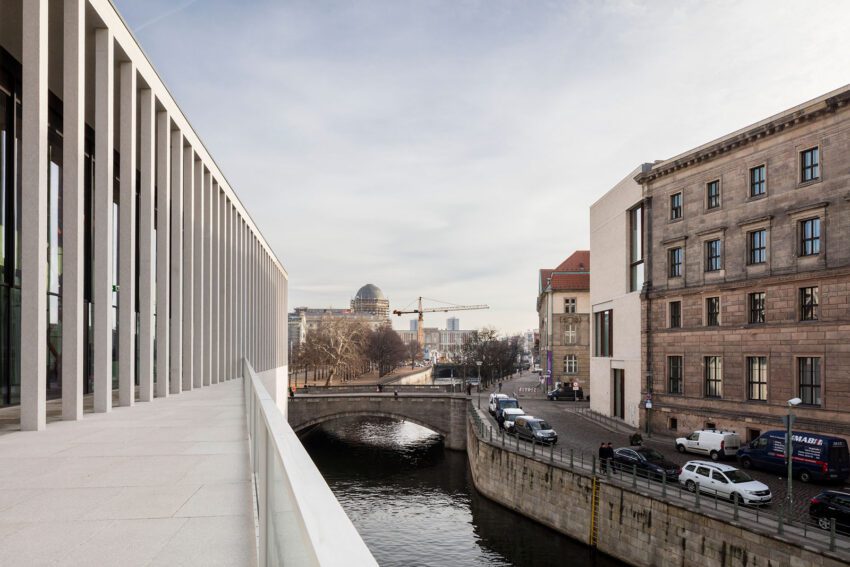
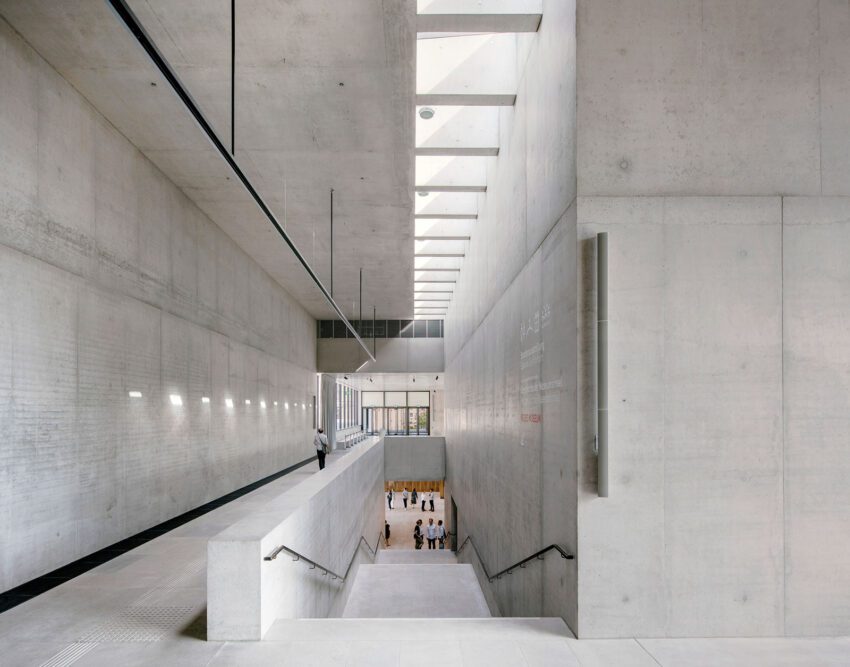

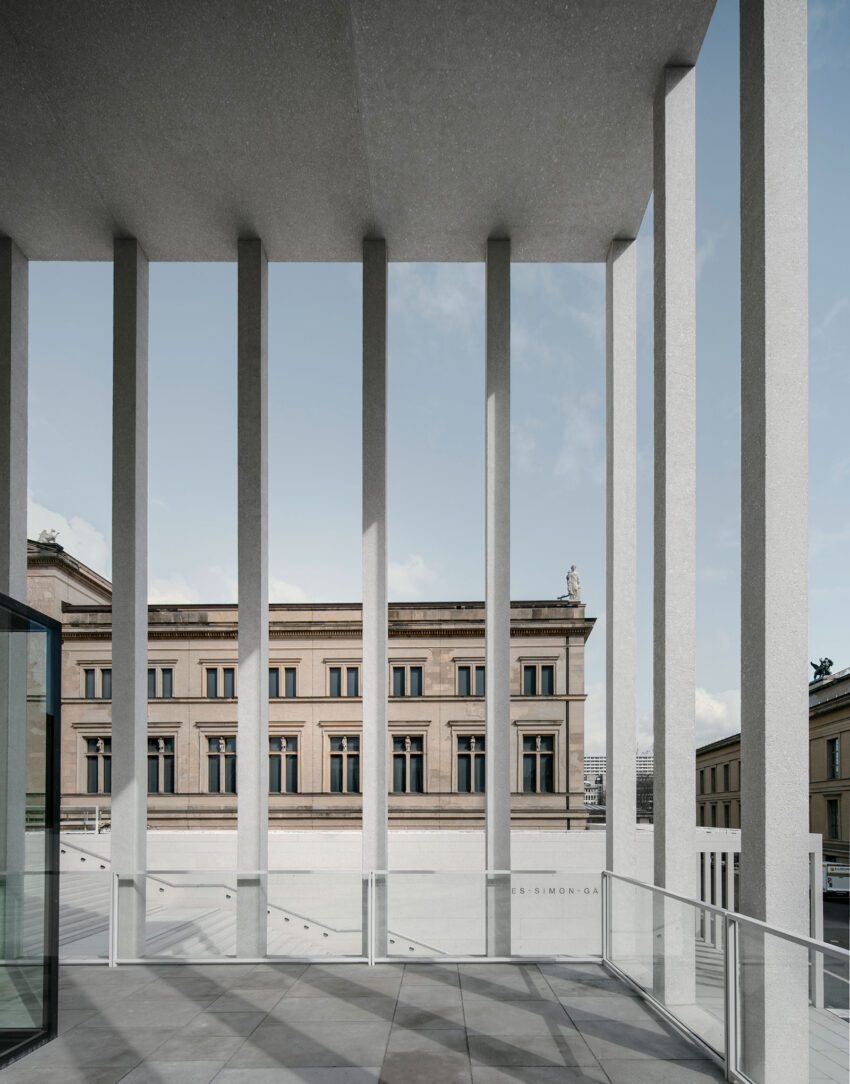
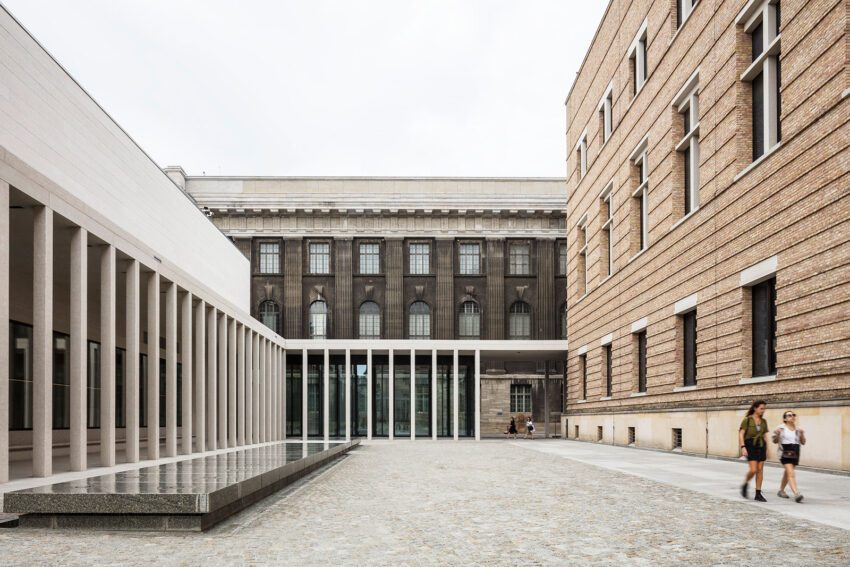

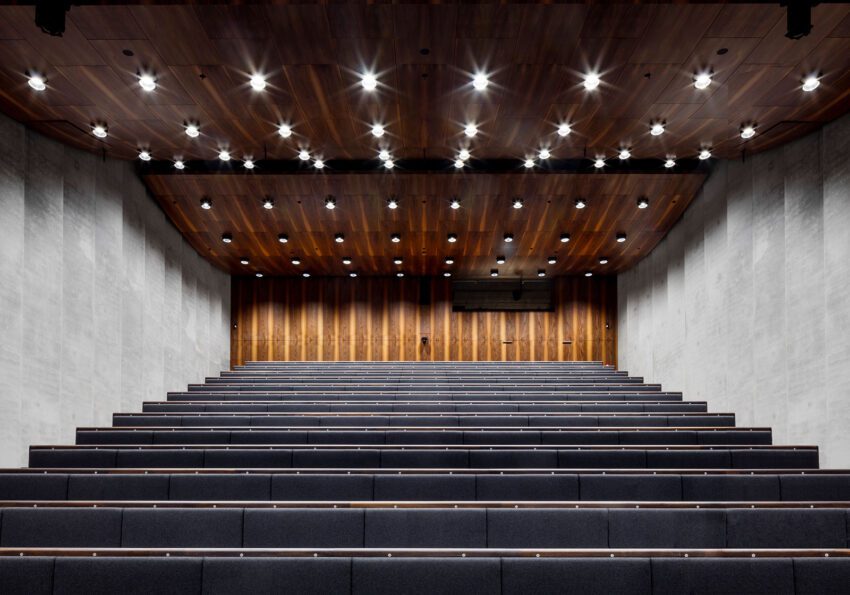

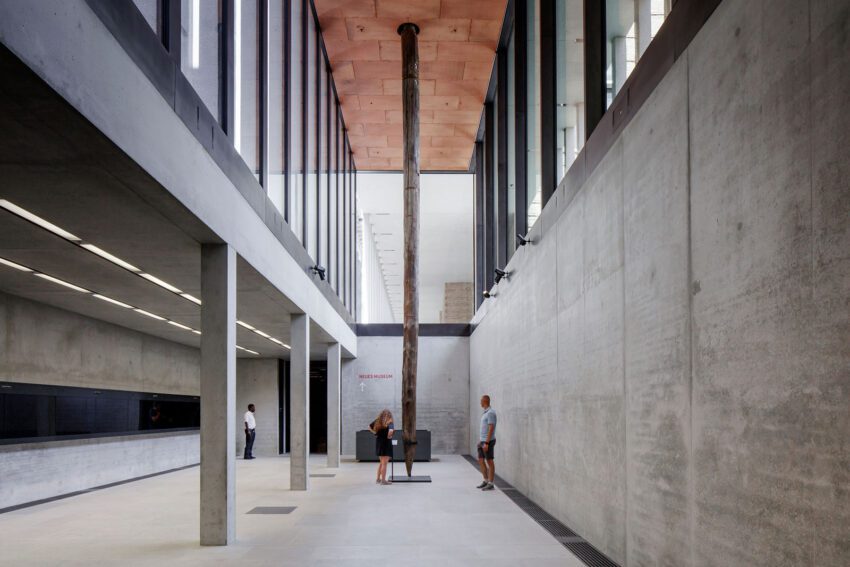
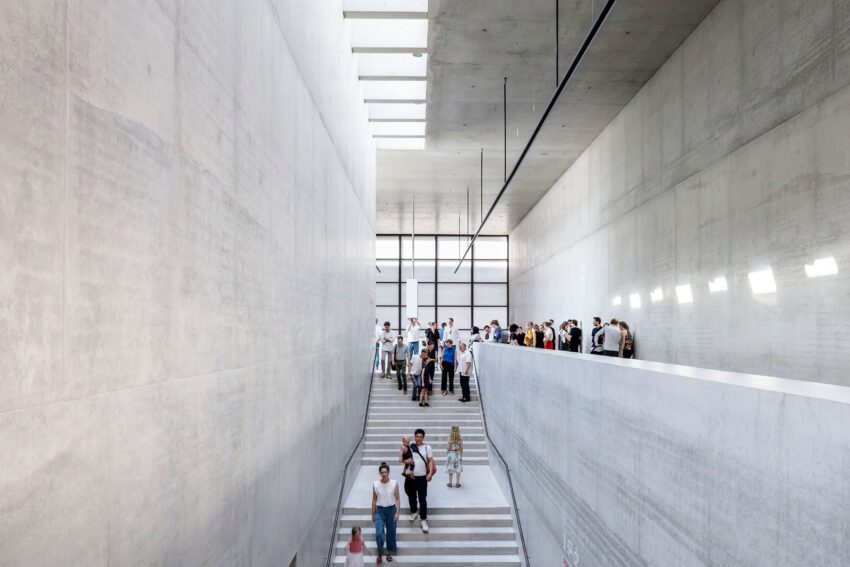
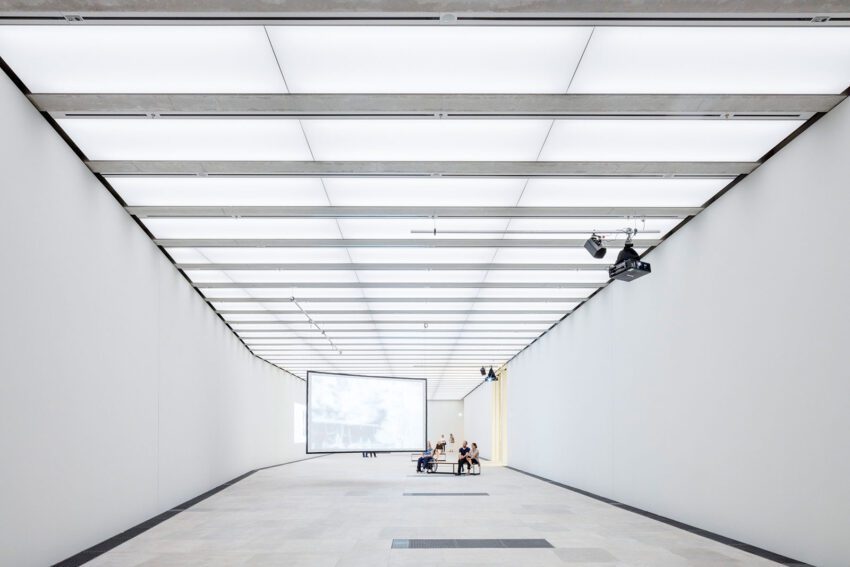
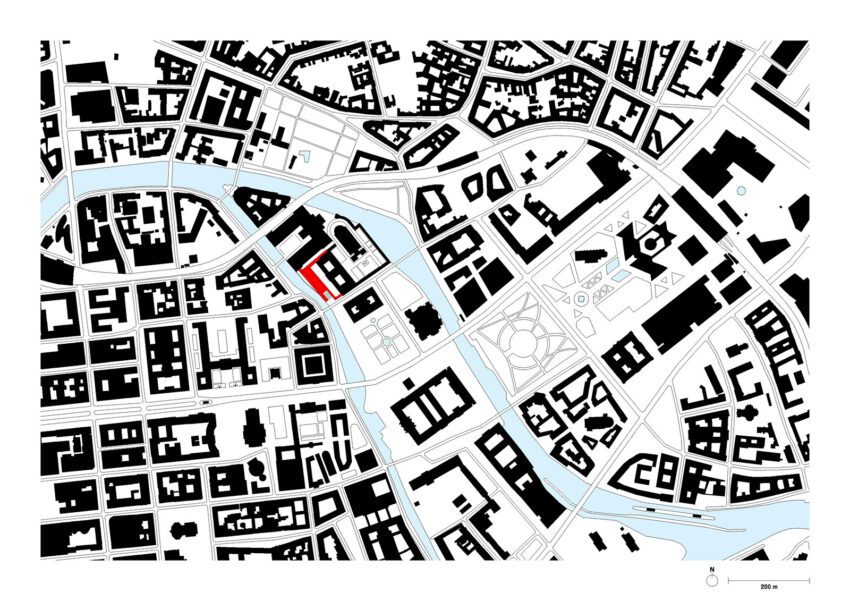


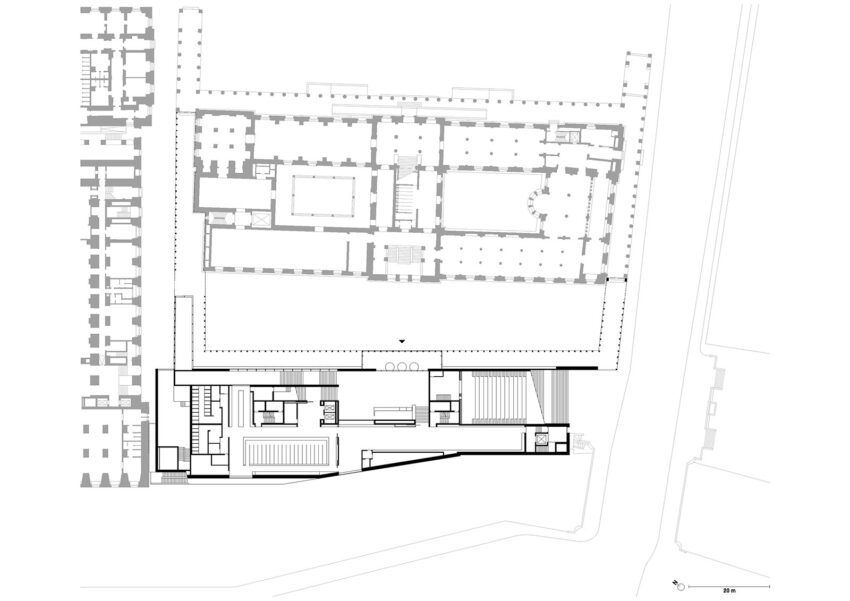
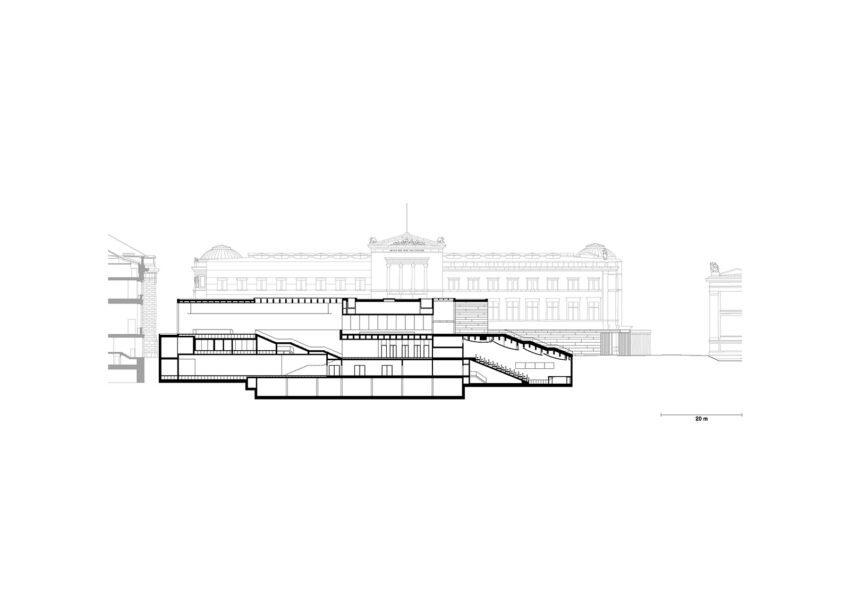

About David Chipperfield Architects
David Chipperfield Architects was founded in London by David Chipperfield in 1985. The practice has since won numerous international competitions and built over 100 projects. Its diverse international body of work includes cultural, residential, commercial, and educational buildings and spaces for both the private and public sectors, as well as civic projects and urban masterplans.
Offices in London, Berlin, Milan, and Shanghai contribute to a wide range of projects and typologies. Together, the four offices drive common architectural ambitions and share a commitment to the collaborative aspect of creating architecture. The practice’s work is characterized by meticulous attention to the concept and details of every project and a relentless focus on refining design ideas to arrive at a solution that is architecturally, socially, and intellectually coherent.
David Chipperfield Architects has won more than 100 international awards and citations for design excellence, including the RIBA Stirling Prize in 2007 for The Museum of Modern Literature in Marbach, Germany, and both the Mies van der Rohe Award (European Union Prize for Contemporary Architecture) and the Deutscher Architekturpreis in 2011 for the Neues Museum, Berlin.
Other Works from David Chipperfield
- Contractor company name: Wenzel + Wenzel GmbH
- Quantity Surveyor/ Cost Consultant: Christine Kappei
- Quantity Surveyor/Cost Consultant: Christine Kappei
- Structural Engineers: IGB Ingenieurgruppe Bauen
- Landscape Architects: Levin Monsigny Landschaftsarchitekten
- Lighting Design: Conceptlicht GmbH
- Project Controlling: Ernst & Young Real Estate GmbH
- Project Controlling: Kemmermann Projektmanagement im Bauwesen GmbH & Co. KG
- Environmental / M&E Engineers: INNIUS DÖ GmbH
- Environmental / M&E Engineers: Inros Lackner AG
- Building Physics: Müller-BBM GmbH
- Fire Consultant: Arge Brandschutz NEG
- Lighting Consultant: matí AG
- Exhibition Planning: Duncan McCauley GmbH und Co. KG
- Signage: Polyform – Götzelmann Middel GbR

